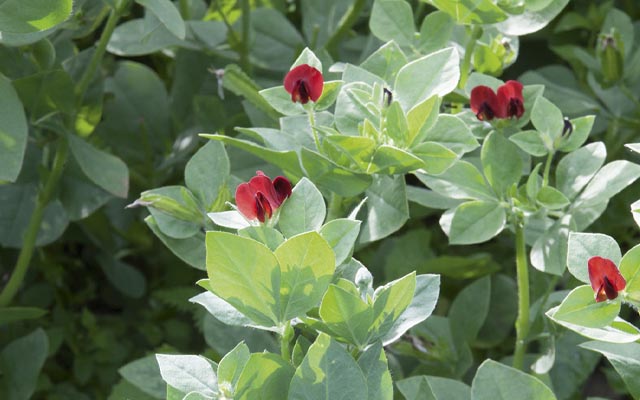Winged peas and palatable petals
Head gardener at Gravetye Manor explains the appeal of these pretty flowers.

As the growing season draws to its conclusion, it is always important to take time to review the previous year’s kitchen-garden crops as part of the preparation for next spring. We always try to get our seed orders done before Christmas, but the sooner we start, the better, while everything is still fresh in the mind. With the arrival of cold, dark evenings, there is nothing more pleasant than sitting by the fire with a pile of seed catalogues, reminiscing about the past summer.
Space is always a premium commodity in any vegetable garden. Our plot is about 1½ acres and, although this sounds large, we need every square foot to meet the demands of a busy restaurant; we try to represent everything on the menu. But to gain the most from the garden, we concentrate on growing the things that are best prepared immediately on harvesting and crops that are almost impossible to buy in the shops.
The asparagus pea, Lotus tetragonolobus, is one such vegetable, which we grew for the first time last season. It caused such a sensation in the kitchens that our head chef insisted he could use as much as we can grow and we’re looking to increase production next year. The asparagus pea is a very old vegetable, dating back to the 14th century, with unusual, winged fruits produced in pairs.
They have a wonderfully unique flavour, like a combination of pea, courgette and asparagus, but they must be picked when small. Any pods larger than 1in will be tough and bitter, so the plants are best cropped daily to avoid any waste. This pea is also quite high in tannins so it should be cooked until soft and served quite simply, to get the most out of the delicate flavour. Asparagus-pea seeds need to be sown in early April, under glass, in individual pots of seed compost. The exact sowing date can vary, depending on the weather, but planning out timings now is helpful, well ahead of the chaos that erupts when spring arrives.
Once hardened off, the young plants will be planted out in our legume bed with the other peas and beans and will crop throughout the summer. Growing to about 18in high, they benefit from the support of short, twiggy pea-sticks. With their fine, slightly glaucous foliage and bright-red flowers, they are very beautiful plants in their own right, with potential for a display at the front of the flower border.
Another high-value ingredient that can only be produced from the garden is our selection of edible flowers. Many of them have interesting and unique flavours and add a beautiful dimension to the presentation of dishes. Some flowers can be quite poisonous, so it’s essential to make absolutely sure that they’re safe before eating them.
However, with a little research, a lot of fun can be had with them in the kitchen. Evening primrose and nasturtium are both very tasty and they self-sow freely around the garden. Cornflowers (Centaurea cyanus) are available in blue, white and deep purple and can be sown in succession for a long season.
Exquisite houses, the beauty of Nature, and how to get the most from your life, straight to your inbox.
The first sowings can be made in the autumn and, once pricked out, can be overwintered in a cold frame for an early crop next year. The centre of the cornflower is tough and bitter, but the petals are lovely when run through a salad or sprinkled over a soup or risotto.
One of my favourite edible flowers is the daylily, Hemerocallis sp., which we grow in three perennial rows. Each autumn, we lift a row, manure the ground and divide the clumps into fist-sized chunks, before replanting them. This keeps them vigorous and seems to increase the flowering season considerably.
The flowers can be used when fully open, which looks beautiful on the plate, but they work best when in bud. With their slightly sweet, peppery, pea flavour, I’ve found they work well in a crab salad, served with cold, crisp white wine on a sunny afternoon.